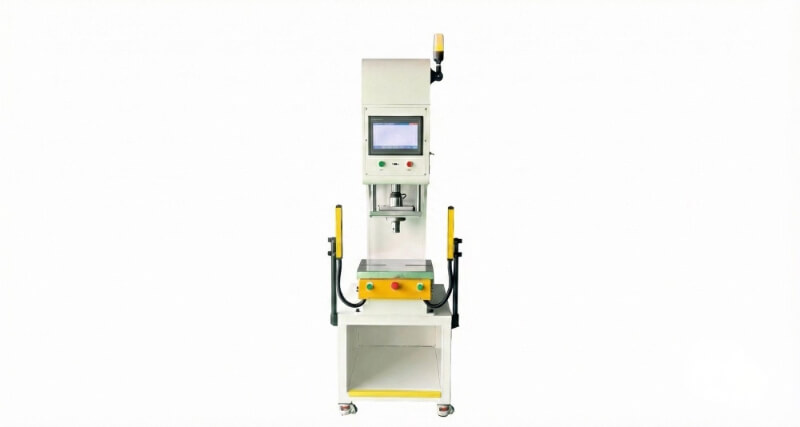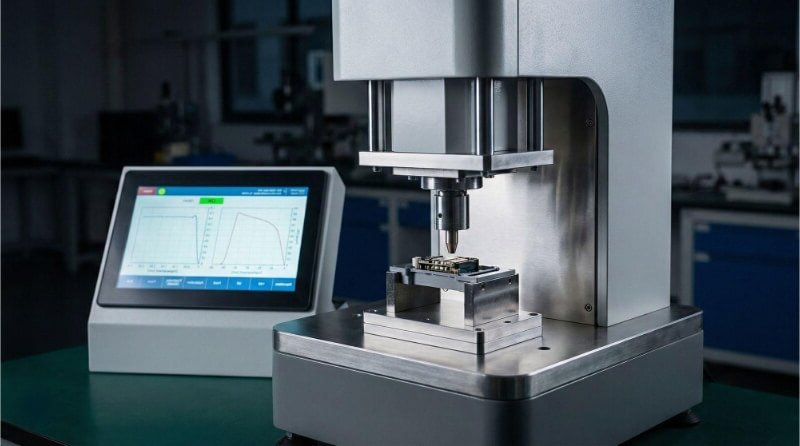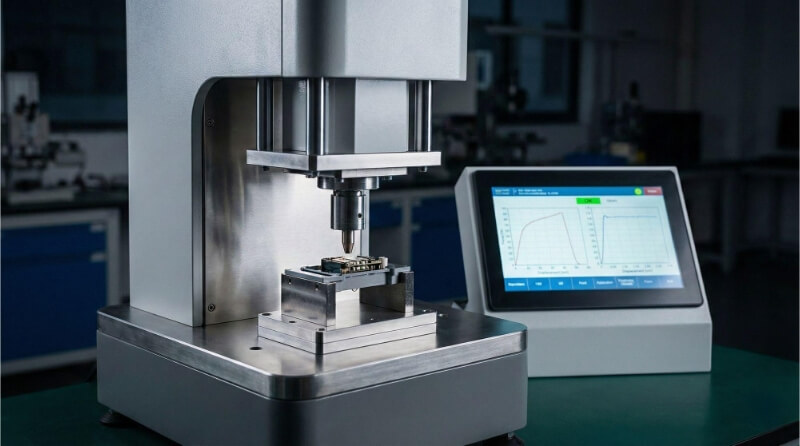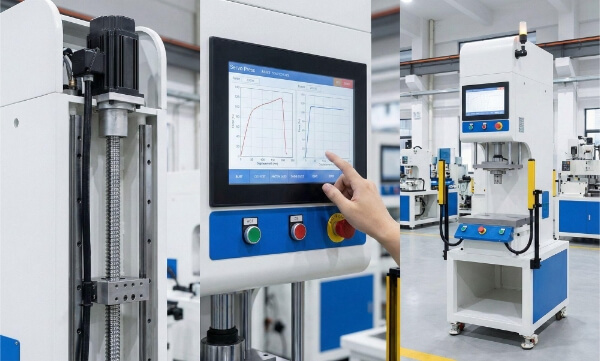Quando si scelgono i materiali per un progetto, si vuole il giusto mix di resistenza, durata ed estetica. Molti ingegneri e responsabili degli acquisti decidono se utilizzare il cromo o l'acciaio inossidabile. Conoscere i fatti relativi a questi due materiali può aiutarvi a prendere una decisione migliore, a evitare mal di testa e ad aumentare il valore del prodotto.
Il cromo è un rivestimento metallico che conferisce una finitura lucida e protegge dalla ruggine. L'acciaio inossidabile è una miscela di metalli solidi che resiste naturalmente alla corrosione e alle macchie. Il cromo sembra brillante e liscio, ma è solo uno strato sottile sopra un altro metallo. L'acciaio inox è resistente in ogni sua parte e non ha bisogno di ulteriori rivestimenti. Entrambi hanno usi e vantaggi unici, ma le loro proprietà e i loro costi differiscono.
Questi due metalli hanno un aspetto brillante e proteggono dalla ruggine, ma le loro differenze sono importanti nell'uso reale. Continuate a leggere per scoprire qual è il più adatto alle vostre esigenze.
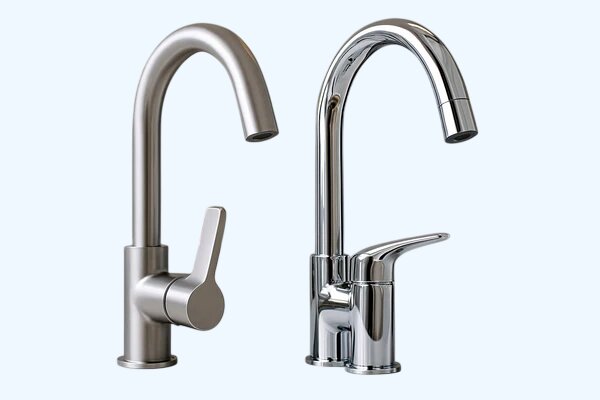
Che cos'è Chrome?
Il termine cromo si riferisce al cromo, un metallo noto per la sua finitura lucida e la resistenza alla corrosione. Nella maggior parte dei casi, quando si parla di "cromo", si intende un sottile strato di cromo che ricopre un altro materiale, spesso acciaio o plastica.
Questo rivestimento migliora l'aspetto e la durezza della superficie. Contribuisce inoltre a ridurre l'attrito e aggiunge un piccolo strato di resistenza alla ruggine. Tuttavia, la protezione dura solo finché la superficie rimane intatta. Se graffiata o danneggiata, il materiale di base sottostante può corrodersi.
Tipi di cromatura
Esistono due tipi principali di cromatura:
Cromo decorativo
Questo strato sottile viene solitamente posizionato sopra il nichel e altri strati di base. Ha un aspetto liscio e lucido e viene utilizzato per oggetti come parti di automobili, rubinetti e utensili.
Cromo duro (o cromo industriale)
Si tratta di un rivestimento più spesso, adatto a un uso intensivo. Aggiunge durata e resistenza all'usura. Si trova nei macchinari, nelle canne idrauliche e nei pistoni.
Come viene prodotto e applicato il cromo?
Lo strato di cromo viene applicato con un processo chiamato galvanotecnica. Ecco come funziona:
- Il materiale di base viene pulito e preparato.
- Viene posto in una soluzione contenente ioni di cromo.
- La soluzione viene attraversata da corrente elettrica. In questo modo il cromo si attacca alla superficie.
Lo spessore finale dipende dal tempo e dalla corrente utilizzati durante la placcatura. Il cromo duro richiede tempi più lunghi e viene solitamente applicato in ambienti di fabbrica controllati.
Questo metodo conferisce ai componenti cromati la caratteristica superficie a specchio e contribuisce ad aumentarne la resistenza all'usura.
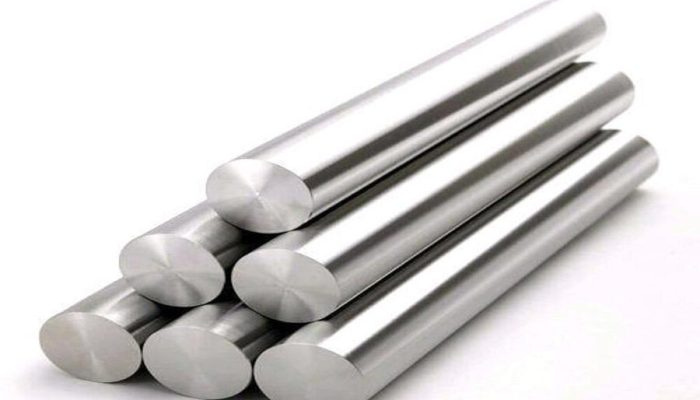
Che cos'è l'acciaio inossidabile?
L'acciaio inossidabile è una lega metallica solida contenente ferro, cromo e spesso nichel o altri elementi. La caratteristica principale è il contenuto di cromo, di solito almeno 10,5%. Il cromo forma un sottile strato di ossido sulla superficie che blocca la ruggine e la corrosione.
A differenza del cromo, l'acciaio inossidabile non è un rivestimento. La resistenza alla ruggine attraversa l'intero materiale. Resiste anche al calore, agli agenti chimici e all'usura. Ha una finitura liscia, spesso spazzolata o lucidata, anche se non sempre lucida come il cromo.
L'acciaio inossidabile è resistente, facile da pulire e dura a lungo. Inoltre, non è reattivo ed è sicuro per l'uso alimentare e medico.
Tipi di acciaio inossidabile
L'acciaio inossidabile è disponibile in diversi tipi. Questi sono raggruppati in base alla loro struttura e agli elementi aggiunti:
Austenitico
È il tipo più comune. Contiene cromo e nichel. Gradi come 304 e 316 rientrano in questo gruppo. Sono altamente resistenti alla ruggine e facili da modellare.
Ferritico
Questo tipo ha meno nichel e più cromo. È magnetica e ha una buona resistenza alla corrosione, ma è più difficile da saldatura e modulo. Costa meno dei gradi austenitici.
Martensitico
Questo tipo è solido e rigido, ma meno resistente alla corrosione. Può essere trattato termicamente per ottenere una maggiore resistenza. È magnetico e viene utilizzato in utensili, coltelli e pale di turbine.
Duplex
L'acciaio inossidabile duplex è una miscela di tipi austenitici e ferritici. Offre un'elevata forza e una buona resistenza alla corrosione. È utilizzato negli impianti chimici, nelle condutture e nelle strutture marine.
Come si produce l'acciaio inossidabile?
Il processo inizia con la fusione di minerale di ferro, cromo e altri metalli in un forno. La miscela fusa viene poi colata in forme come lastre o billette.
Successivamente, il metallo viene laminati a caldo o a freddo in lastre, barre o altre forme. A seconda dell'uso finale, viene poi trattato termicamente, pulito e talvolta lucidato.
Alcuni gradi possono passare attraverso decapaggioche rimuove gli ossidi superficiali. Altri possono essere passivati, il che aumenta la resistenza alla corrosione addensando lo strato di ossido.
Il risultato è un metallo brutale e uniforme, in grado di gestire umidità, calore e usura senza rompersi.
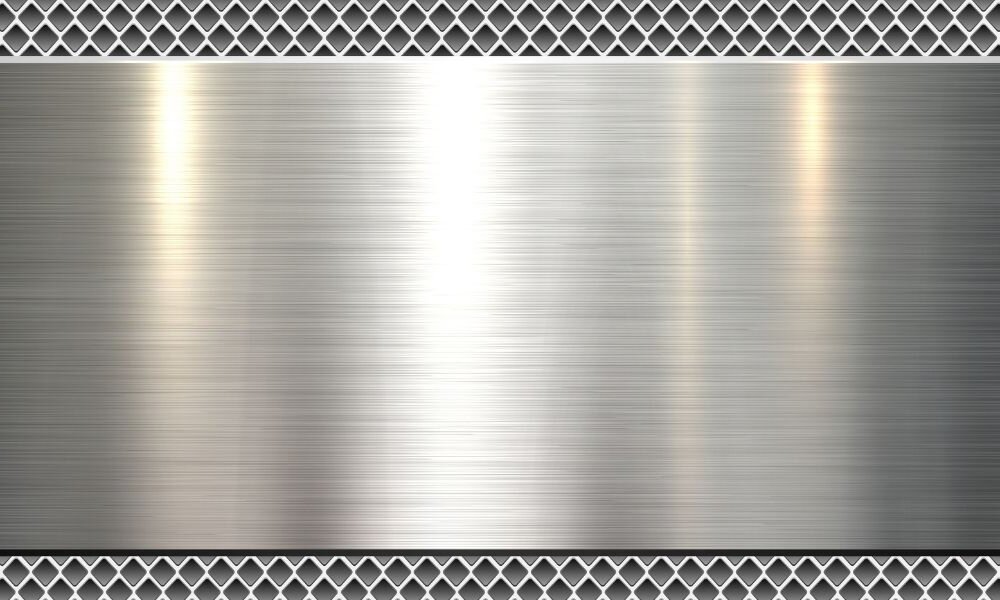
Cromo e acciaio inossidabile: Differenze chiave
Il cromo e l'acciaio inossidabile possono sembrare simili, ma la loro composizione e il loro comportamento sono diversi. Queste differenze fondamentali influiscono sulle prestazioni, sull'aspetto e sulla durata.
Composizione chimica
Il cromo non è un componente metallico di per sé. È un sottile rivestimento di cromo applicato su una base, come l'acciaio o la plastica. Contiene cromo puro sulla superficie esterna, ma non ha struttura interna.
L'acciaio inossidabile è una lega solida. Contiene ferro, almeno 10,5% di cromo e altri elementi come nichel o molibdeno. Il cromo è mescolato in tutto il metallo, non solo in superficie.
Aspetto e finitura superficiale
Il cromo ha una lucentezza simile allo specchio. È liscio, altamente riflettente e spesso viene utilizzato per creare un effetto visivo. Ha l'aspetto di un specchio lucido ed è comune su finiture e parti decorative.
L'acciaio inossidabile ha un aspetto satinato o finitura spazzolata per impostazione predefinita. Può essere lucidato, ma non riflette come il cromo. A seconda della finitura, la texture può variare da opaca a semilucida.
Resistenza alla corrosione e durata nel tempo
Il cromo offre una protezione a livello superficiale. Aiuta a ridurre la ruggine, ma solo finché il rivestimento rimane intatto. Una volta graffiata la superficie, l'umidità può raggiungere il metallo di base e causare la ruggine.
L'acciaio inossidabile offre una resistenza integrata alla corrosione. Poiché il cromo fa parte della lega, forma uno strato protettivo che si ricostruisce da solo se danneggiato. Resiste meglio del cromo all'umidità, alle sostanze chimiche e persino al sale.
Resistenza e proprietà meccaniche
L'acciaio inossidabile è molto più resistente e rigido dei componenti cromati. Ha un'elevata resistenza alla trazione, resiste alla flessione e regge bene agli urti. Può sopportare carichi strutturali e sollecitazioni ripetute.
Il cromo, essendo un rivestimento, aggiunge una certa durezza superficiale ma non migliora la resistenza del metallo di base. Il cromo duro può aumentare la resistenza all'usura di utensili e parti di macchine, ma non rende l'oggetto complessivamente più resistente.
Confronto dei costi
La cromatura è solitamente più economica in anticipo, soprattutto per scopi decorativi. Utilizza meno materiale ed è più veloce da applicare. Per i pezzi ad alto volume, dove l'aspetto è più importante della resistenza, la cromatura consente di risparmiare.
L'acciaio inossidabile costa di più per unità, soprattutto per i gradi più alti come il 316. Il prezzo deriva dai metalli di lega, dalla lavorazione e dalla maggiore durata. Il prezzo deriva dai metalli di lega, dalla lavorazione e dalla maggiore durata.
Requisiti di manutenzione
Il cromo deve essere pulito e curato regolarmente. Se esposto all'umidità, alla salsedine o a prodotti chimici aggressivi, può scurirsi, sfaldarsi o perdere lucentezza. Una volta danneggiato, non può essere riparato da solo. L'unica soluzione è la riverniciatura.
L'acciaio inossidabile è molto più facile da mantenere. Resiste alla ruggine e alle macchie. Basta una semplice passata di acqua o di un detergente delicato per mantenerlo in buono stato. Anche se graffiato, lo strato di ossido passivo lo protegge.
Applicazioni in vari settori
Sia il cromo che l'acciaio inossidabile sono utilizzati in molti settori. Tuttavia, i loro ruoli differiscono in base all'aspetto, alla forza e alla resistenza all'usura e alla corrosione.
Automotive e trasporti
Il cromo è utilizzato per finiture, griglie, cerchi e altre parti esterne. Dà una finitura lucida e di alto livello. È più importante per l'aspetto che per la resistenza.
L'acciaio inossidabile viene utilizzato per i sistemi di scarico, i componenti strutturali e i dispositivi di fissaggio. Gestisce meglio il calore, le vibrazioni e l'umidità. Viene scelto quando le prestazioni sono più importanti della lucentezza.
Articoli da cucina ed elettrodomestici
Il cromo viene utilizzato su rubinetti, maniglie e apparecchi. Ha un aspetto pulito e brillante, ma se viene graffiato o esposto spesso all'acqua, può usurarsi.
L'acciaio inossidabile è utilizzato per lavelli, pentole ed elettrodomestici. È sicuro per gli alimenti, facile da pulire e resiste alle macchie e alla ruggine. Resiste al calore e all'uso quotidiano senza perdere la sua funzionalità.
Costruzione e architettura
Il cromo ha un uso limitato negli edifici. Può essere utilizzato sulle maniglie delle porte o sugli apparecchi di illuminazione a scopo decorativo.
L'acciaio inossidabile è standard nei supporti strutturali, nei corrimano, nei dispositivi di fissaggio e nei pannelli esterni. Dura nel tempo, resiste alla corrosione e supporta carichi pesanti. Inoltre, conferisce un aspetto moderno agli elementi di design visibili.
Industrie mediche e alimentari
Il cromo non è molto utilizzato in questi campi a causa della sua protezione solo superficiale e del rischio di sfaldamento.
Il materiale preferito è l'acciaio inossidabile. Non è reattivo, è facile da sterilizzare ed è molto resistente. È utilizzato in strumenti chirurgici, dispositivi medici, attrezzature per la lavorazione degli alimenti e serbatoi di stoccaggio. Soddisfa i più severi standard igienici e rimane affidabile anche in caso di pulizia ripetuta.
Scegliere il materiale giusto per il progetto
La scelta giusta dipende dall'uso che se ne farà. Prima di decidere, dovrete valutare l'aspetto, la durata, il costo e l'ambiente.
Quando scegliere Chrome?
Scegliere Chrome quando:
- È necessario ottenere una finitura lucida e a specchio per ottenere un aspetto gradevole.
- Il pezzo non deve affrontare condizioni difficili come umidità, sostanze chimiche o usura.
- Desiderate una soluzione a basso costo per le applicazioni decorative
- La parte non è portante o sottoposta a stress meccanico
- Si utilizza in spazi interni o in ambienti asciutti.
Il cromo si adatta bene a finiture, parti di mobili, ferramenta e utensili in cui l'aspetto è più importante della durata.
Quando scegliere l'acciaio inossidabile?
Scegliete l'acciaio inossidabile quando:
- Il componente deve resistere alla ruggine e alla corrosione, soprattutto in ambienti umidi o all'aperto.
- Avete bisogno di resistenza strutturale e prestazioni a lungo termine
- L'articolo è sottoposto a calore, sostanze chimiche o a forte usura.
- Viene utilizzato in ambienti alimentari, medici o industriali.
- Si desidera una manutenzione ridotta e una lunga durata di vita
L'acciaio inossidabile è l'opzione migliore per i lavori più impegnativi, le condizioni più difficili e i luoghi in cui sicurezza e pulizia contano.
Conclusione
Il cromo e l'acciaio inossidabile si assomigliano, ma svolgono funzioni diverse. Il cromo è un sottile rivestimento superficiale noto per il suo aspetto lucido. L'acciaio inox è una lega metallica solida che resiste alla ruggine. Il cromo è eccellente per un uso decorativo a basso costo. L'acciaio inox è più resistente, dura più a lungo e funziona meglio in ambienti difficili.
Avete bisogno di aiuto per scegliere il materiale giusto per i vostri pezzi? Il nostro team può aiutarvi a confrontare le opzioni in base al progetto, al budget e al caso d'uso. Contattateci ora per un supporto esperto e un preventivo rapido.
Ciao, sono Kevin Lee

Negli ultimi 10 anni mi sono immerso in varie forme di lavorazione della lamiera, condividendo qui le mie esperienze in diverse officine.
Contattate

Kevin Lee
Ho oltre dieci anni di esperienza professionale nella fabbricazione di lamiere, con specializzazione nel taglio laser, nella piegatura, nella saldatura e nelle tecniche di trattamento delle superfici. In qualità di direttore tecnico di Shengen, mi impegno a risolvere sfide produttive complesse e a promuovere innovazione e qualità in ogni progetto.

